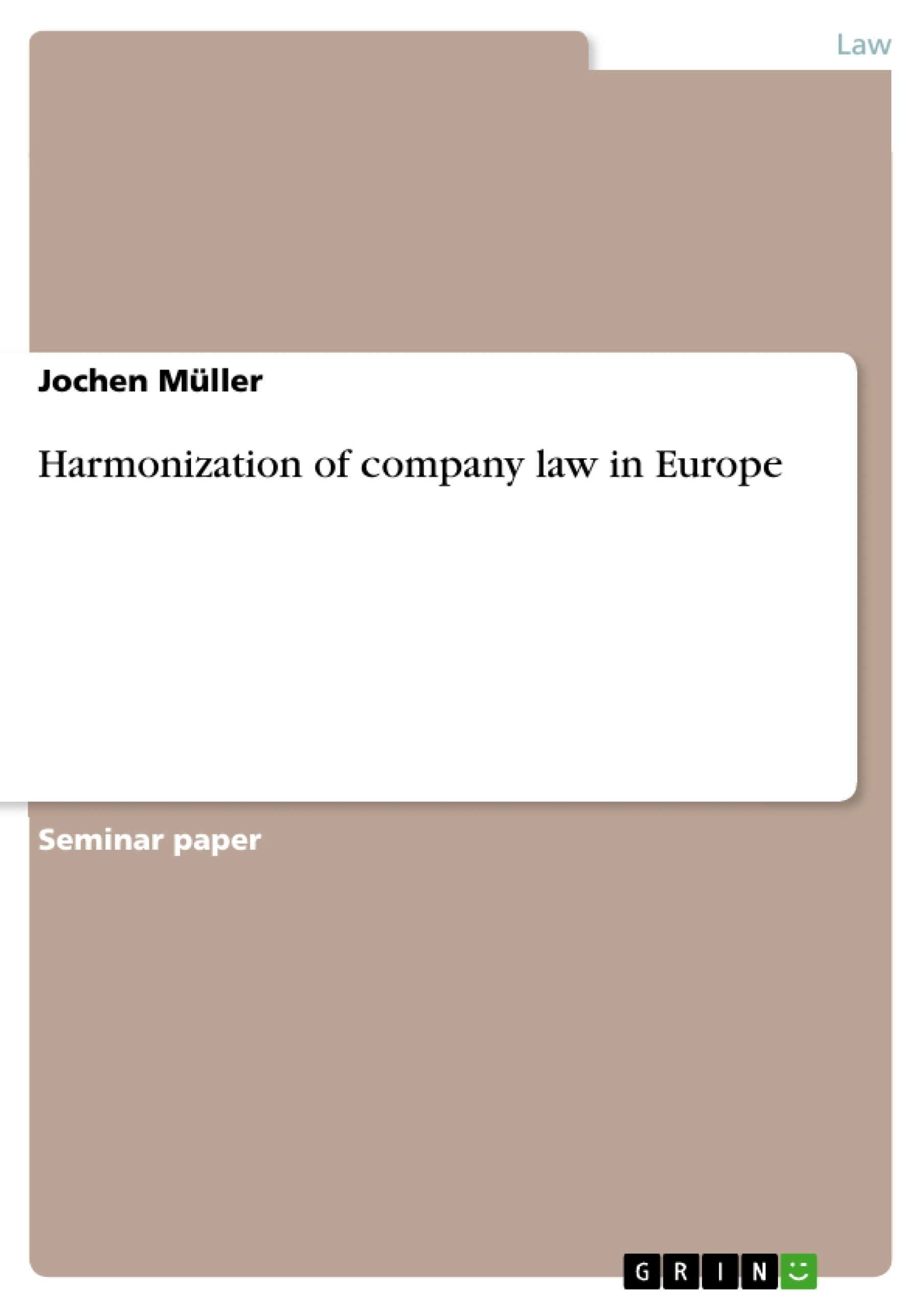European law is a daily reality. The legislation and, correspondingly, the extend of regulations given by the written primary and secondary European Union (EU) law becomes so densely, meanwhile almost as densely as it was hitherto only known from the national regulations system. Consequently, e.g. in Germany, more than 50 per cent of all administrative decisions on federal, state or communal level are taken on basis of regulations coming from Brussels - not everybody is aware of this development yet. From a theoretical point of view, this EU-legislation can be divided into two different types of rules. One type, of course, are the rules passed by the EU-legislator which create new fields of law. This is regularly then the case if supranational European institutions are founded. The by far bigger part of EU-legislation is, however, that type which consists of rules created to harmonize the regulations already existing on national level in the Member States in order to lighten the burden of friction caused by 12 different (not to talk about the future developments, namely the East-Enlargement of the European Union) systems within the EU in the age of globalization, especially seen from an economical point of few. Again, from a theoretical point of view, the legislative instrument of harmonization can be divided into two categories. The first can be described as assimilation and adjustment. It is meant to bring the differing national regulations in one subject of matter, e.g. company law, in a kind of mainstream, i.e. to co-ordinate and to make them similar but not necessarily uniform. The Commission in that case normally uses directives for harmonization of law. The Member States then are obliged to set up their own legislation in a manner that the principle of effectiveness of the EU-rules is not infringed but promoted. Nevertheless, there is room for keeping alive typical and traditional national characteristics of legislation. The second category of harmonization can be described as standardization or, even stronger, unification of law. In that case the means of EU-regulation is used. It takes away the freedom of the Member States to design and set up harmonized rules in their own responsibility. An EU-regulation is binding upon every Member State and it has immediate validity. Thus, unlimited availability of the same law throughout the whole Community is, ideally, being achieved.
Inhaltsverzeichnis (Table of Contents)
- I Discuss the need for harmonization of company law in Europe having regard to the development and experiences in the U.S. and the current status of harmonization in Europe.
- A) Introduction
- I) LEADING TO THE TOPIC
- II) WHAT IS HARMONIZATION?
- III) AUTONOMOUS HARMONIZATION
- B) Need for Harmonization of Company Law in the European Union?
- I) WHY MIGHT HARMONIZATION BE NECESSARY?
- 1) CURRENT STATUS OF HARMONIZATION OF COMPANY LAW IN EUROPE
- a) Globalization
- b) Freedom of Establishment in the EU
- c) Protection of Third Parties...
- d) Development and Experiences in the U.S.A..
- II) WHY MIGHT HARMONIZATION NOT BE NECESSARY?
- a) High Transition Costs
- b) Gap between Law and Reality
- c) Different Languages...
- d) Package Solutions
- e) Petrifaction of Law...
- f) Development and Experiences in the U.S.A...
- C) Evaluation of the Facts.
- I) THE COMPETITIVE APPROACH...
- II) A EUROPEAN MODEL ACT.
- D) Conclusion
- I) EUROPEAN PROBLEMS – A FINAL OUTLOOK....
- II) THE SOCIETAS EUROPAEA
- Harmonization of company law in Europe
- Comparison of European and U.S. experiences
- Economic and legal implications of harmonization
- Benefits and drawbacks of different approaches to harmonization
- The potential role of a European Model Act
Zielsetzung und Themenschwerpunkte (Objectives and Key Themes)
This essay aims to discuss the need for harmonization of company law in Europe, taking into consideration the development and experiences in the U.S. and the current status of harmonization in Europe.
Zusammenfassung der Kapitel (Chapter Summaries)
The introduction lays the groundwork for the discussion, exploring the concept of harmonization and its application to company law in the European Union. The essay then delves into the reasons why harmonization of company law might be necessary, including the importance of legal certainty, the reduction of transaction costs, and the establishment of a more unified legal framework within the EU.
The chapter on the current status of harmonization of company law in Europe examines existing EU directives aimed at coordinating company law affairs. It also discusses factors influencing the need for harmonization, such as globalization, the freedom of establishment within the EU, and the protection of third parties.
The essay further explores the potential drawbacks of harmonization, including the high costs of transition, the gap between law and reality, and the difficulty of reconciling different legal systems and languages. It also examines the experiences of the United States in the area of company law, highlighting the use of model act legislation and its potential application to the European context.
The final section delves into the potential benefits and challenges of different approaches to harmonization, concluding with a discussion of the possibility of a European Model Act and the implications of the Societas Europaea.
Schlüsselwörter (Keywords)
This essay explores key topics such as harmonization, company law, European Union, legal certainty, transaction costs, globalization, freedom of establishment, model act legislation, and the Societas Europaea.
- Citation du texte
- Jochen Müller (Auteur), 2002, Harmonization of company law in Europe, Munich, GRIN Verlag, https://www.grin.com/document/56982



